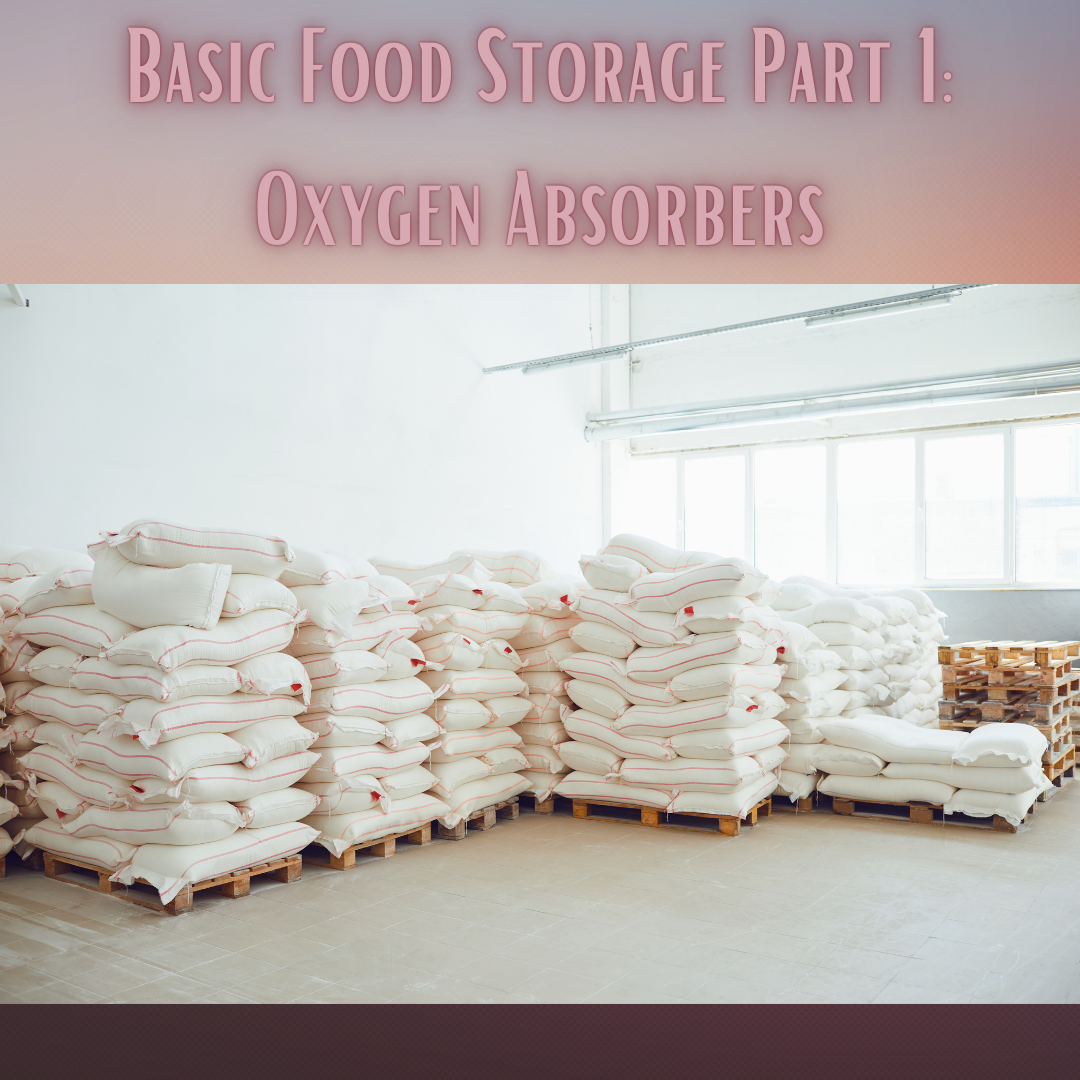This is an update on a series from four-years ago originally published on authoraustinchambers.com.
The Infringed series will be the cornerstone of our public awareness campaign for the legal fights and the tyranny behind them. There are boxes of data covering decades of attacks. I’m going to repost some of my older blog articles to provide a steady stream of content in the meantime. This is part 1 of 4 covering some long-term food storage basics.
Oxygen Absorbers, Part 1
I’ll lead with giving credit where it is due. The online store USAEmergencySupply.com has a multitude of excellent articles, and this is where I’ve procured the bulk of my knowledge. Food preservation can become a very broad topic when factoring in things like water-bath canning, pressure canning, and freeze drying. What I’m going to do in this mini-series is go a bit simpler and provide some basics for preserving that giant bag of rice or beans you bought at Costco or Grocery Outlet or wherever. This series will address many things, including the different ways (and when they’re appropriate) to combat the enemies of food storage: air, moisture, and UV light. Let's start with oxygen absorbers.
O2 absorbers work by eating the oxygen in the air, thereby creating a nitrogen-rich environment for the food. When utilized properly in a sealed environment, they can bring the O2 level down to less than 1/100th of 1 percent. They have an iron powder in them that rusts—it truly is that simple. Rust is oxidation, or as I like to call it, “extremely slow fire.”

You should use O2 absorbers with foods that are low in oils and moisture (10 percent or less). Higher-moisture or oil contents should be used with desiccants or gas displacement. This is not an article about the foods themselves, but nuts and brown rice are two examples of foods not to use O2 absorbers with. You’ll notice in the pictures that I buy two of the many sizes available. You may only need one, or you may use them in tandem (E.g. two 500’s to equal a 1000 unit). How many you need will depend on the food and the size of the container.

The packs in the pictures are all sealed and have ten pouches each. Notice that the pink dot indicates the bag is holding a good seal. This is important. Once you open that bag, you need to use all ten… or… do you???
NO! You have options, if you make a plan before you start. If you own a vacuum sealer, you can simply seal the unneeded absorbers into a bag. If you have small mylar bags, squeeze that air out as best you can, and they will use a small amount of their capability until the oxygen is gone.
This other option is my favorite: put them into a jar! And one way to boost that jar’s ability is to use your vacuum sealer (or a hand brake pump, which is part 4 in this series) to pull the oxygen out, eliminating the need for the absorbers to work.
USAEmergencySupply.com has an article entirely dedicated to teaching you how many absorbers should be used for the volume and food. I cannot tackle that topic and do it justice. I advise just finding it, taking a screenshot of it, and printing it to put on the wall near wherever you do your food storage activities.
In the next article of this series, I will cover mylar bags.

